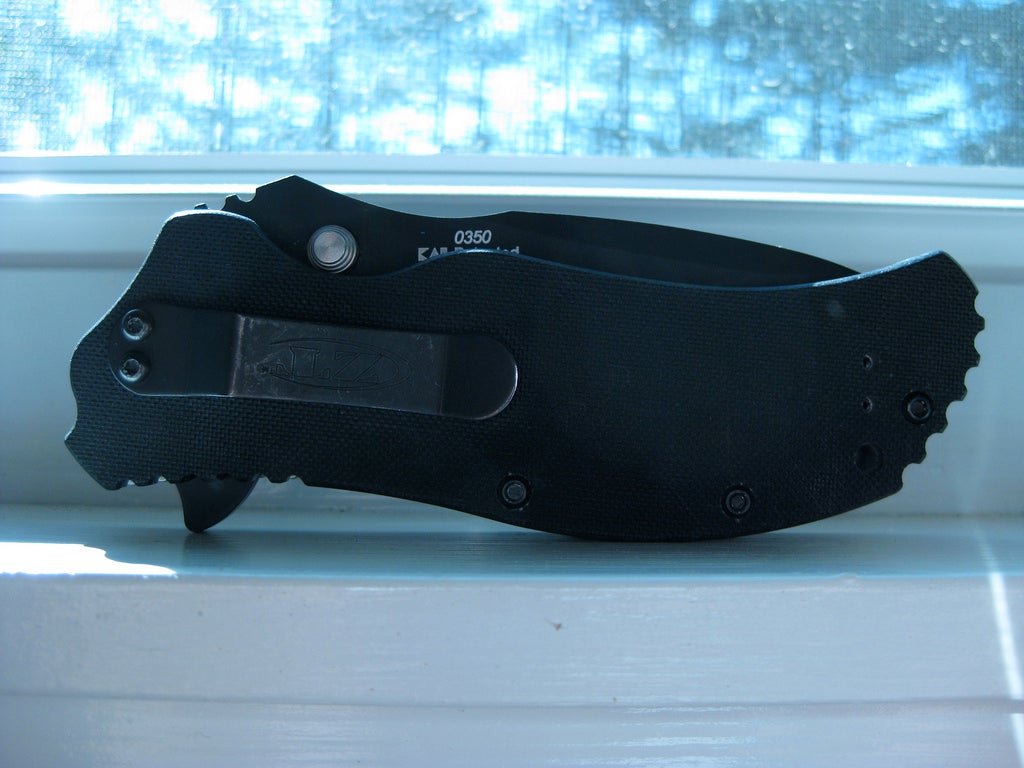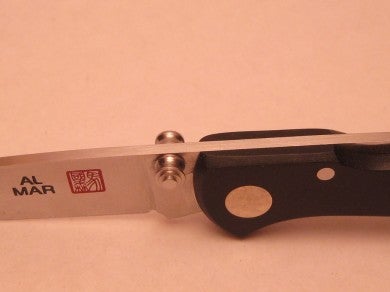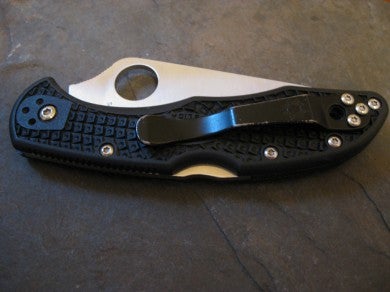The flipper knife
Tony Sculimbrene 06.11.13

Modern knives are defined, in large part, by two innovations: 1) the pocket clip; and 2) the ability to open the knife with one hand without the use of a mechanized assist, such as a spring. For a long time, the three primary methods were thumb studs (and thumb disks), an opening hole as seen on Spyderco knives, and the Emerson Wave. In the mid 90s, the flipper was added to the list. The flipper is a quick, easy to use, low maintenance method of opening a knife one handed. It also happens to be an excellent introduction to the history of knife making over the last 50 or 60 years.
Tracing the origins of the flipper deployment method is something akin to looking at the strata of the earth’s crust as a record of the past — in one place you get a snapshot of the history of knife design over the last 50 or so years.
We’ll start this brief look at the history of the flipper with the Switchblade Knife Act of 1958. Politicians, scared by images of 50’s-era gang war on the silver screen, reacted to something that was really nothing by passing new laws (this is, after all, what they do best). In banning switchblades and other fast opening knives, the federal government and the states that followed, limited the public’s access to knives that not only deployed fast but also deployed with one hand, a very convenient feature, especially in work knives. All that remained after the act’s passage were slow, nail knick knives and a powerful incentive to innovate.
Over the years, makers got creative. The thumbstud and thumb disk allowed for one handed deployment, but neither were particularly fast or attractive.
Then Sal Glesser, the founder of Spyderco, made the thumb hole famous. It is a simple and ingenious development that made knives convenient again but without running afoul of the law.
Ernie Emerson, of Emerson Knives, created the wave feature that solved the slow deployment problem. Waved knives are as fast or faster than switchblades (retrieve v. retrieve + push button).

To these two classic innovations we can now add a third, newer method of opening a knife: the flipper. Developed by the famed custom maker Kit Carson, flipper deployment is as fast and as easy as it comes, rivaling the Spyderco hole and the Emerson wave. Flippers make autos and assists unnecessary for most users.
The flipper was made possible (or perhaps more strictly speaking, more easy to implement) by two other innovations–Michael Walker’s liner lock and Chris Reeve’s frame lock.
Flippers come in many different shapes, but the basic mechanics are simple: a part of the blade is shaped into a shark-fin like protrusion that extends through the spine of the knife when closed. The flipper’s open-back construction is what made the liner or frame lock necessary. Pushing down or pulling back on the flipper puts pressure on the detent, which is a combination of a tiny notch and bearing on the blade and handle designed to hold the blade closed) . When the applied pressure overcomes the detent then the blade will snap into the open position. There is a bit of skill in designing and making a good detent, but a good flipper is something that any novice can spot–the knife should open with no wrist or arm action whatsoever. Finger pressure alone should be enough. Here is a good example:

Flippers have encouraged other knife innovations as well, mainly ultra-smooth bearing-based pivots. IKBS and KVT are two of the more prominent bearing-based pivot systems. All of these systems use ball bearings around the knife pivot to radically reduce friction during deployment. The end result is a flipper that operates with much more speed and ease of deployment; these pivots also yield a more rigid knife overall.
Flippers are here to stay, and they are available in all price ranges. The Kershaw Chill is an excellent, easy to deploy, budget-friendly flipper. The CRKT Swindle is a stylish, mid-priced knife with a unique look and IKBS pivot. Finally, at the top end of the production scale are the two titanium framelock flippers: the Spyderco Southard and the Zero Tolerance ZT560/561.
Time to take advantage of decades of innovation and get yourself a flipper. You’ll love it if for no other reason than the simple, addictive pleasure of opening and closing it over and over again.

